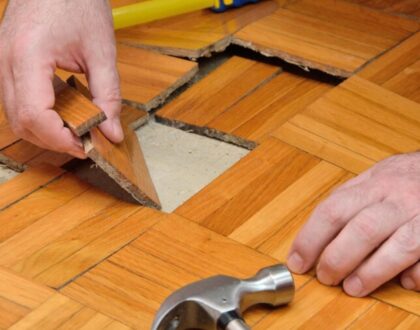How Can You Tell Good Quality Hardwood Floors?

When it comes to upgrading your home’s flooring, hardwood stands out as a timeless and elegant choice. However, not all hardwood floors are created equal, and discerning between high and low-quality options is crucial for a lasting and aesthetically pleasing investment. In this guide, we’ll delve into the key factors that define good quality hardwood floors, equipping you with the knowledge needed to make an informed decision for your space.
1. Wood Species Matters
The choice of wood species in hardwood flooring isn’t merely an aesthetic decision; it’s a fundamental determinant of quality. Opting for hardwoods with a reputation for durability and resistance to wear, such as oak, maple, and cherry, ensures longevity and performance. For those seeking a touch of the exotic, woods like Brazilian cherry and mahogany not only provide unique aesthetics but also contribute to the overall quality of the flooring. Prior to making a purchase, delving into the characteristics of different wood species is imperative to align the flooring with both personal preferences and lifestyle considerations.
2. Grading Standards
Hardwood floors come in a spectrum of grades, each reflecting the appearance of the wood. Clear or select grades, residing at the top tier, boast minimal knots and imperfections, presenting a pristine and refined look. On the other end, lower grades may embrace the natural variations of the wood, offering a more rustic charm. Understanding these grading standards is pivotal, as it enables homeowners to choose a flooring option that not only aligns with aesthetic preferences but also accommodates budget constraints.
3. Construction Techniques
The construction technique of hardwood flooring is a pivotal factor in determining its quality and performance. Solid hardwood planks, hewn from a single piece of wood, offer unparalleled authenticity and the ability to be sanded and refinished multiple times, ensuring longevity. Engineered hardwood, crafted by layering different wood veneers, provides dimensional stability, making it a suitable choice for areas with fluctuating humidity levels. Choosing the right construction technique ensures that the flooring not only meets aesthetic desires but also thrives in the specific environment it is placed in.
4. Finish and Coating
The finish applied to hardwood floors serves a dual purpose – enhancing aesthetics and providing protection. High-quality finishes act as a shield against scratches, stains, and general wear, thereby extending the life of the flooring. Seek out floors with multiple layers of UV-cured polyurethane or aluminum oxide finishes for optimal durability. Additionally, the sheen level, ranging from matte to high gloss, allows homeowners to tailor the flooring’s appearance to achieve the desired ambiance in their living spaces.

5. Board Width and Thickness
The dimensions of hardwood planks, specifically their width and thickness, wield a considerable influence over the stability and appearance of the floors. Wider boards can create a sense of expansiveness in a room, while narrower ones exude a classic and timeless charm. Thicker boards, in general, promise enhanced durability, standing the test of time admirably. Choosing the right dimensions is an art, requiring consideration of both the space’s scale and individual design preferences.
6. Installation Method
The manner in which hardwood floors are installed holds the key to their long-term performance. Professional installation is indispensable, ensuring proper acclimation, moisture control, and precise alignment. Nail-down, glue-down, and floating installations are common methods, each carrying its own set of advantages and considerations. Collaborating with a flooring professional is advised, as they can guide homeowners to the installation method that best suits the specific needs and conditions of their space.
7. Janka Hardness Rating
The Janka hardness rating serves as a litmus test for a wood species’ resistance to indentation, offering insights into its overall hardness and durability. A higher Janka rating indicates greater resistance, signifying a wood that can withstand daily wear and tear admirably. While hardness isn’t the sole determinant of quality, it provides a valuable metric for homeowners looking to ensure their chosen wood species aligns with their expectations for longevity and resilience.
Conclusion:
Investing in hardwood floors is an investment in the enduring beauty and value of your home. By considering factors such as wood species, grading, construction techniques, finish, board dimensions, installation, and hardness, you can confidently choose high-quality hardwood flooring that aligns with your style preferences and lifestyle. Armed with this knowledge, you’ll not only enjoy the visual appeal of your new floors but also relish in the durability and longevity they bring to your living space. Upgrade your home with the timeless elegance of top-notch hardwood floors – a decision that truly stands the test of time.
You can find out more at Majestic Hardwood Floors!
Recommended Posts

Expert Hardwood Repair Services at Your Fingertips
May 28, 2024

